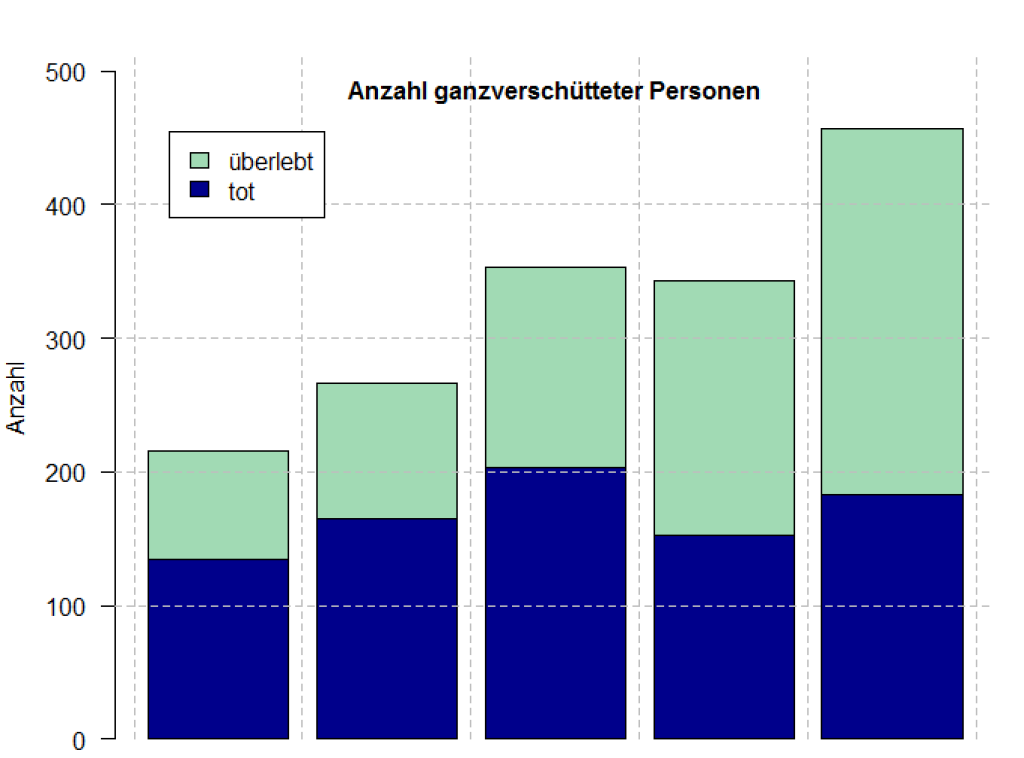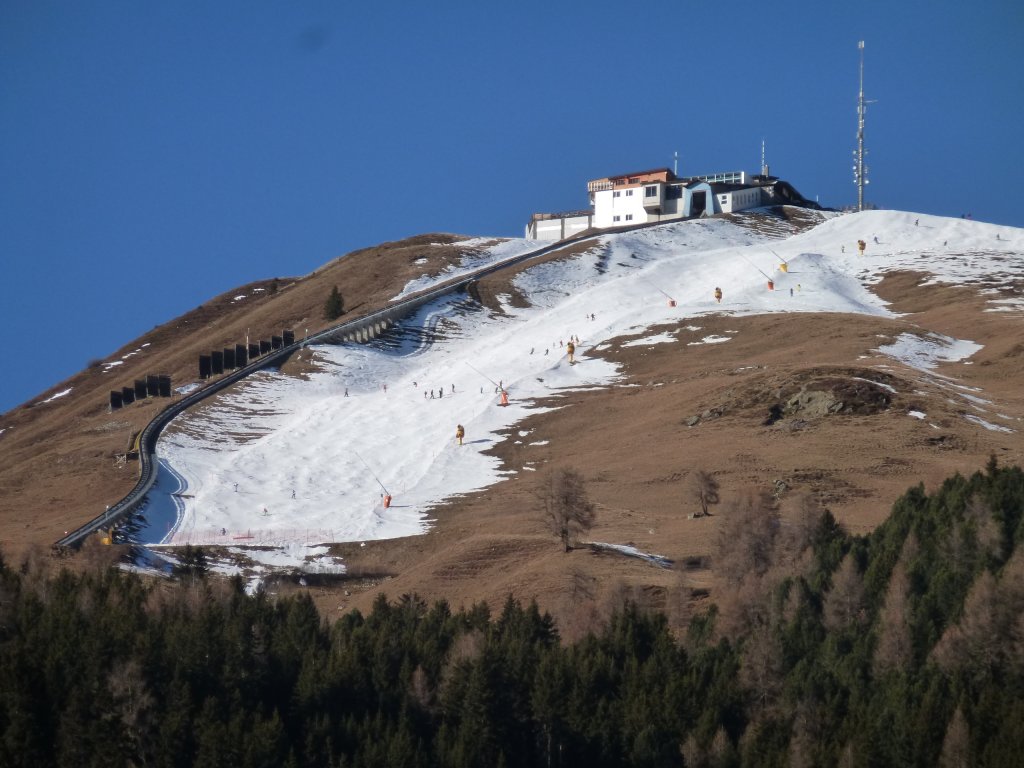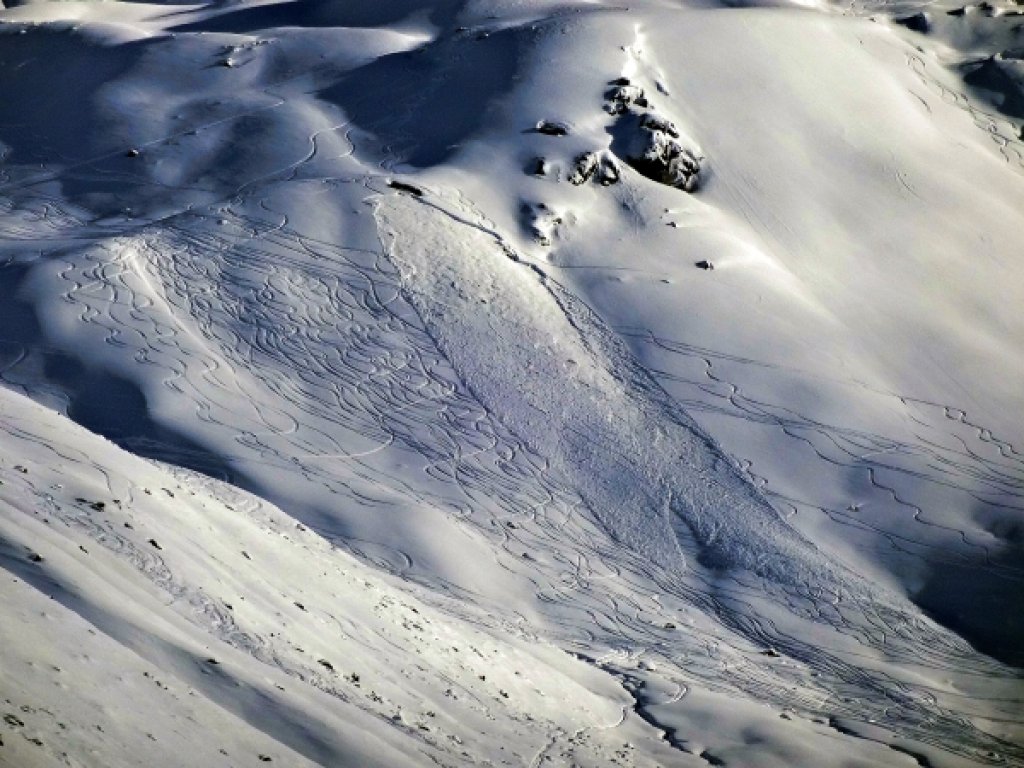The number of ski tourers and off-piste skiers is likely to have increased significantly in recent decades. This is indicated by the survey of the Swiss population on their sporting behavior, even if exact figures are lacking. The avalanche accident statistics of the SLF show that the number of people buried in avalanches has also increased over the last 50 years, but the number of fatalities has remained unchanged or even decreased slightly (figure above). The survival rate of completely buried persons has risen accordingly (figure below, dark curve). In the same period, more and more buried victims were located by their comrades (figure below, light curve). Even though companion rescue played an increasingly important role in rescues, organized rescue was also called out in 90 percent of cases of avalanche incidents with completely buried victims. This figure has only fallen slightly over the past 50 years. In the last 20 years, i.e. the period in which modern rescue and communication technologies were already widespread, more than 800 people were completely buried by avalanches in open terrain. On average, they were buried for 30 minutes at a depth of 80 cm. 44 percent of those buried died. The survivors were generally buried much less deeply and, above all, for much less time than those who did not survive the accident. Almost three quarters of the survivors were located by their comrades. The chances of survival were greatest when the burial depth was shallow and body parts were visible on the surface. Without visual evidence of the burial site, efficient localization is only possible with an avalanche transceiver. If the companions succeeded in doing this, two thirds of those buried survived.
Study | SLF - Survival chances of completely buried people increased
New technologies help with the rescue
The survival rate of completely buried people has risen steadily over the last 50 years. Only completely buried persons in open terrain in the months of December to April are taken into account. 10 percent of fatalities were not or only partially buried. These are not shown. Period: past 50 years, periods as in the graph below.
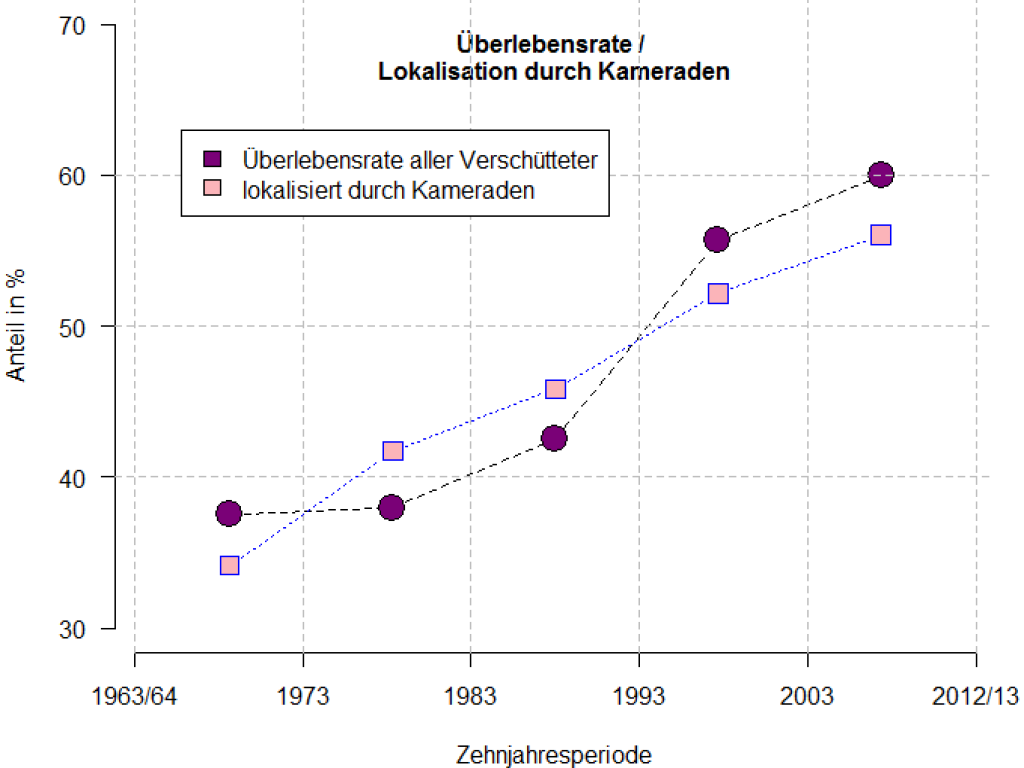
The share of companion rescue
The share of companion rescue
Decisive five minutes
The burial time for victims located by comrades has decreased from 15 to 10 minutes in the last 20 years. Because the chances of survival drop sharply in these five minutes, the proportion of survivors has risen from 60 to 72 percent, meaning that mortality has fallen by almost a third. The buried victims located by the organized rescue team were also rescued significantly faster (60 instead of 105 minutes). However, because the survival curve is almost horizontal in this phase, the survival rate still only increased slightly from 25 to 28 percent.
Preventing accidents
Despite major progress, every avalanche burial is life-threatening. This is why preventing accidents continues to be of the utmost importance. The data shows that companion and organized rescue must work hand in hand to save the lives of trapped persons.
Article published in Bergretter, issue 32, May 2015, page 10, PDF here. This text was written by Frank Techel, SLF.
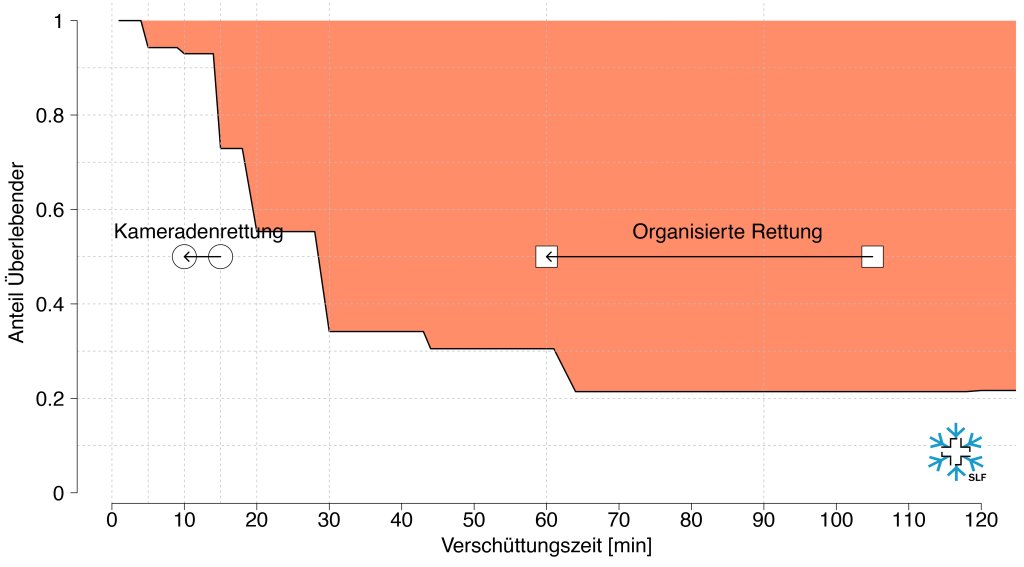
The \"survival curve\"
The \"survival curve\"
This article has been automatically translated by DeepL with subsequent editing. If you notice any spelling or grammatical errors or if the translation has lost its meaning, please write an e-mail to the editors.
Show original (German)Related articles
-
Study | SLF - Winters are getting shorter
PowderGuide • 10/04/2016In a recently published study by the University of Neuchâtel and the SLF (WSL), snow depth data from 11 weather stations in the Swiss Alps were examined. The stations are located in an altitude range between 1139 and 2450 m and the time series go back to 1970. The duration of snow cover has decreased at all 11 stations, whereby the earlier melting of the snow cover in spring is reflected in the statistics. -
SLF presents group checklist
PowderGuide • 03/20/2016For most freeriders and ski tourers, it is a matter of course to think about questions like: What does the situation report say? How is the weather, how is the snow? Was it windy, is there fresh drift snow? Is the snowpack structure favorable? We know that we have to be aware of our surroundings if we want to move safely in avalanche terrain. However, we often forget to consider ourselves and our behavior in the group. The SLF has developed a checklist to help prevent problems with group dynamics. -
SLF Winterflash 14/15
Christiane Eggert • 01/27/2016The winter of 2014/15 was characterized by an exceptionally snow-poor early winter with correspondingly below-average snow depths. Over the entire winter, snow depths were only just above average above 2200 m and above average on the southern slopes of the Alps. These marked differences in snow depth depending on altitude were caused by above-average temperatures, which repeatedly melted away the snow at medium and low altitudes. With the exception of February, the months of November to March were all too warm, and early winter was record warm in some cases. Despite the excessively warm winter, large parts of the Central Plateau and Jura experienced an average number of snow days thanks to a favorable combination of cold and precipitation. The snow cover build-up was weak in the inner Alps, but also at times on the northern slopes of the Alps, whereas it was much more stable on the southern slopes of the Alps. Compared to the long-term average, last winter was more dangerous. Danger level 3 (considerable) was forecast more than normal, level 2 (moderate) less. Two major avalanche accidents led to an above-average number of avalanche fatalities overall. By April 15, 32 people had died in avalanches.
Comments
-
hTranslated from German.
